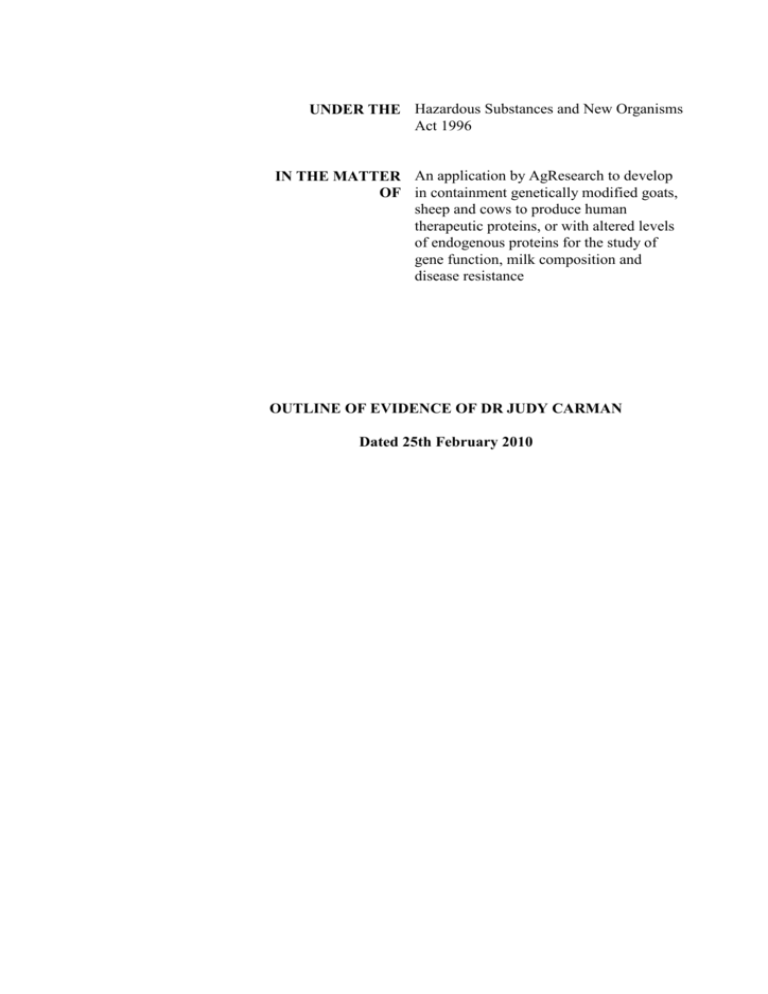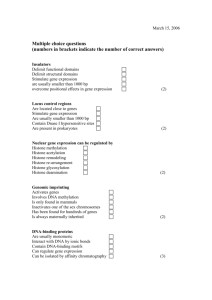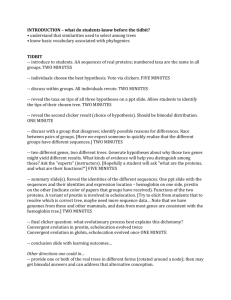Affidavit of Dr.Judy Carman
advertisement

UNDER THE Hazardous Substances and New Organisms Act 1996 IN THE MATTER An application by AgResearch to develop OF in containment genetically modified goats, sheep and cows to produce human therapeutic proteins, or with altered levels of endogenous proteins for the study of gene function, milk composition and disease resistance OUTLINE OF EVIDENCE OF DR JUDY CARMAN Dated 25th February 2010 Outline evidence Part A: Expertise Director of the Institute of Health and Environmental Research Inc (IHER), a private institution for health and environmental research, whose principal current focus is on genetically modified (GM) foods. Graduated 1989 PhD degree in Medicine (University of Adelaide) in the field of Metabolic Regulation/Nutritional Biochemistry, particularly in relation to cancer. In 1998 obtained a Master of Public Health from the University of Sydney specialising in Epidemiology and Biostatistics. Worked in a number of positions with those relevant to this matter: Teaching at Roseworthy Agricultural College (now part of the University of Adelaide); Work at CSIRO (Commonwealth Scientific and Industrial Research Organisation) Division of Human Nutrition; Senior Epidemiologist in the Communicable Disease Control Branch of the South Australian Department of Human Services (now the South Australian Department of Health) investigating outbreaks of disease. Chief investigator into the multi-institutional investigation in Australia into whether Rabbit Calicivirus (Viral Haemorrhagic Disease of Rabbits) was able to infect people. Senior investigator of a research group comprising researchers within and external to IHER, undertaking research into whether GM foods are safe to eat. Part B: Make up of GMOS and gene cassettes Brief discussion of how GMOS are developed, relevant to the information provided in Appendix II of the application. Discussion of the making of a “gene cassette” which is then inserted into the recipient organism. Promoter, terminator, modification marker sequences. Issues raised by use of marker genes coding for antibiotic resistance. 2 Part C: Analysis of information proved in Appendix II Applicant has not provided any specific information about: which one of many possible promoter sequences it will use, which one of many possible terminator sequences it will use, which of many possible marker genes it will use, whether the marker genes used will make the animals resistant to antibiotics (and if so, which antibiotics), nor has it specified which other specific genes will be used. Concern that the applicant has provided an enormous list of thousands of organisms from which it may use millions of different DNA sequences and/or genes. The genomes of some of the organisms have not been fully mapped yet, so the applicant is asking to place as yet undiscovered genetic sequences into recipient animals. Some of the organisms listed by the applicant are known to cause serious illnesses or pathologies in animals and people. Approval is being sought for potentially millions of different gene cassettes. No description of the way or the order in which the DNA sequences/genes will be joined together and which vector system will be used to incorporate the gene cassette into the DNA of the recipient. Since genetic sequences are unknown, proteins that may be created are unknown and no scientist can undertake a reasonable assessment of safety of what is essentially unknown. Part D: Conclusion The application is seriously deficient in the information provided. Without further specificity as to genetic material being used no reasonable assessment can be undertake. 3 Part E: Comment on E & R report In light of the above, E & R view that “All risks are well known and characterised and able to be managed to an acceptable standard” is dangerously wrong. 4











